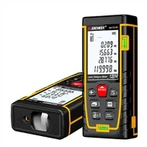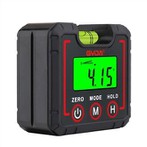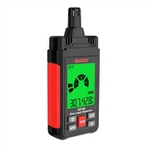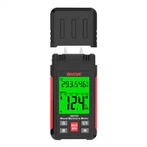How to Use a Digital Multimeter to Check Line Fault Points
1. Visual inspection.
You can touch the temperature rise of the battery, resistor, transistor, and integrated block with your hand to see if it is too high. If the newly installed battery heats up, it indicates that the circuit may be short circuited. In addition, it is also necessary to observe whether the circuit is disconnected, desoldered, mechanically damaged, etc.
2. Waveform analysis.
Use an electronic oscilloscope to observe the voltage waveform, amplitude, period (frequency), etc. of each key point in the circuit.
For example, if the clock oscillator is on, if there is no output from the oscillator, it indicates that the internal inverter is damaged, or it may be due to an open circuit in external components.
3. Measure component parameters.
For components within the fault range, parameter values should be analyzed for online or offline measurements. When measuring resistance online, the influence of components in parallel with it should be considered.
4. Hidden troubleshooting.
Implicit faults refer to faults that appear and disappear from time to time, and the instrument is sometimes good or bad. This type of fault is quite complex, and common reasons include solder joints being loose, loose connectors, poor contact of the transfer switch, unstable component performance, and continuous disconnection of the leads. In addition, it also includes factors caused by external factors. If the ambient temperature is too high, the humidity is too high, or there are intermittent strong interference signals nearby, etc.
5. Detect the working voltage at all levels.
Detect the working voltage at each point and compare it with the normal value,
Firstly, the accuracy of the reference voltage should be ensured, preferably using a digital multimeter of the same model or similar for measurement and comparison.
How to Use a Multimeter to Check Circuit Faults
Measure and compare the values. The multimeter measurement method refers to the method of using a multimeter to measure the values of voltage, current, and resistors in a circuit, in order to determine a fault.
Multimeters, also known as multiplexers, multimeters, triple meters, and multimeters, are indispensable measuring instruments in power electronics and other departments, generally aimed at measuring voltage, current, and resistance. Multimeters are divided into pointer multimeter and digital multimeter according to their display mode. It is a multifunctional and multi range measuring instrument. Generally, a multimeter can measure DC current, DC voltage, AC current, AC voltage, resistance, audio level, etc. Some can also measure AC current, capacitance, inductance, and some parameters of semiconductors (such as β) Etc.






